GoBuggy
Many people rely on pushchairs every day. Pushing a child long distances every day, especially with added weight can put physical strain on parents.
Skills Developed
- Problem Solving
- Mechatronic Design
- Concurrent Engineering
Team Size
1
project Length
18 weeks
Year
2019-2020
The aim of the overall design project is to design a retrofittable variable power assistance device for pushchairs. This was completed over two semesters. Semester one used several studies to research the product and its market potential and semester two progressed onto the development of a working prototype. The design processes used in this project were the iterative design process and the concurrent engineering model.
Semester One
Two mini studies were completed within semester one a competitive product analysis and a user study. The competitive product analysis drove the creation of early concepts and the user study narrowed the selection to a chosen concept. The information collected in semester one was collated in a design specification document.
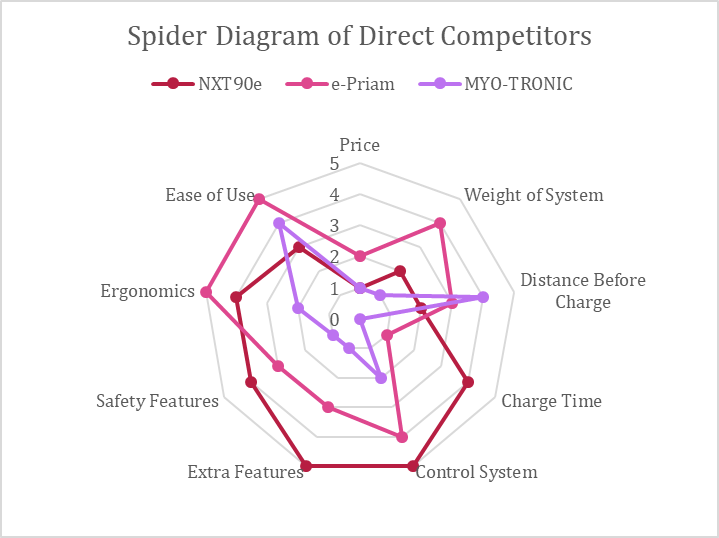
Competitive Product Analysis
The competing product analysis was used to discover a gap in the electric pushchair market for a cheaper retrofittable product. Research into mechanical pushchairs and adjacent market analysis of retrofittable bike products was used to produce early mechanical concepts.
User Research
Other problems still needed to be assessed further before progressing with the design of an overall system and so a User Study was used to look at what pushchair users want and need. Qualitative and quantitative data was collected from multiple users. This was done using two techniques. A survey collected data from 59 users and reviewer interviews were completed to reinforce the choices of the survey e.g. ease of use.
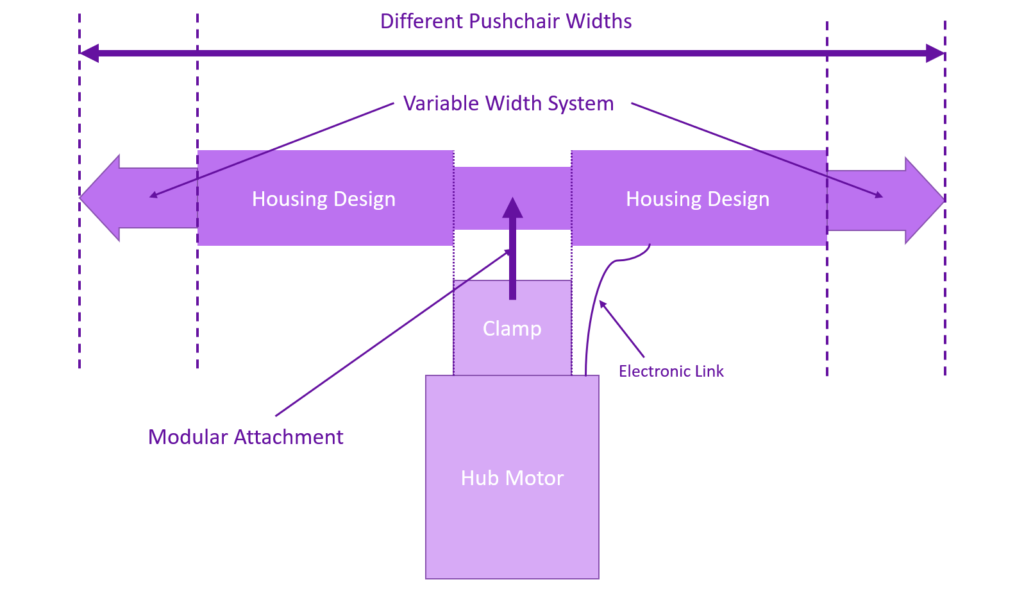

Chosen Design and Specification
The work outlined in the first semester, along with concept generation, allowed for a chosen concept to be made. The concept would change in width to adjust to different sizes of pushchair and the speed of the pushchair will be controlled using the pressure force of the user. Further design decisions are shown in the table.
Semester Two
Concurrent engineering techniques were used in semester two to reduce lead times. The system was broken into smaller manageable subsystems electronics, software and mechanical. Each subsystem was iterated individually and slowly integrated to create a final product.
Electronic Subsystem
The systems were tested individually using breadboards for rapid prototyping. A motor and battery was sized using a specification created in semester two. Force sensitive resisters measured the users input. After testing the final schematic and PCB was created using a CAD software Fritzing.
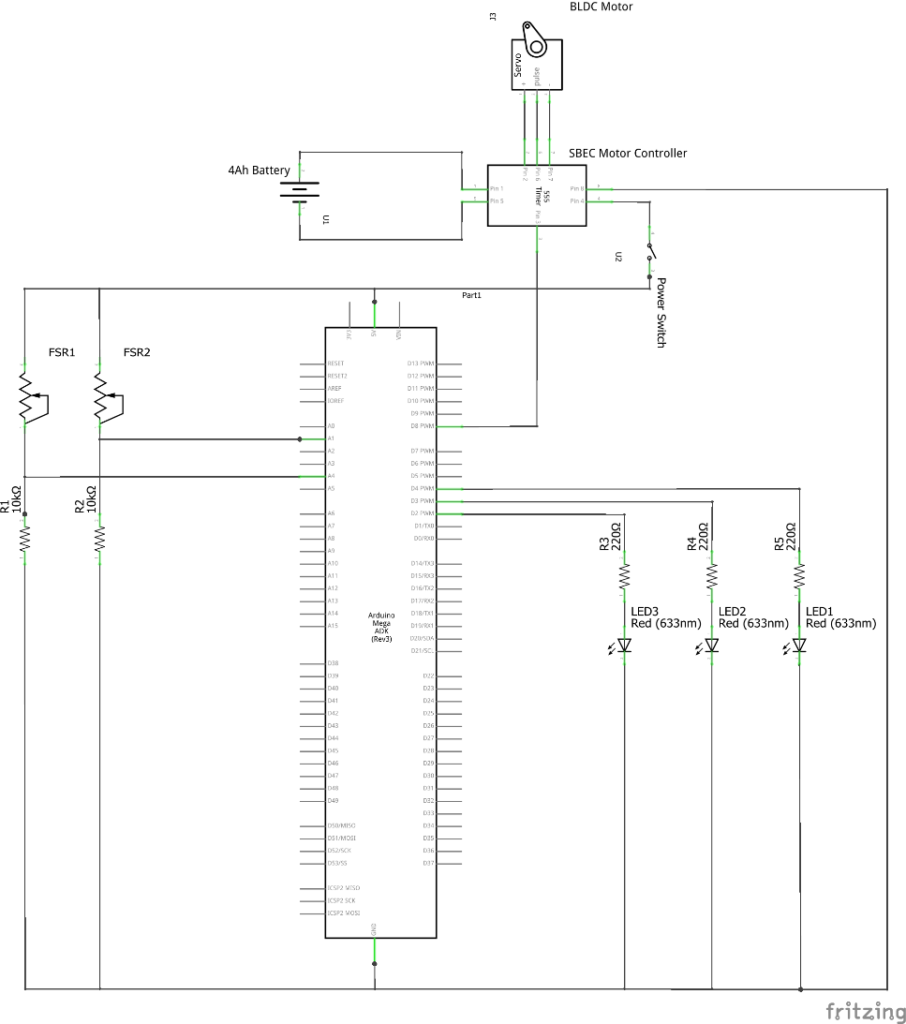

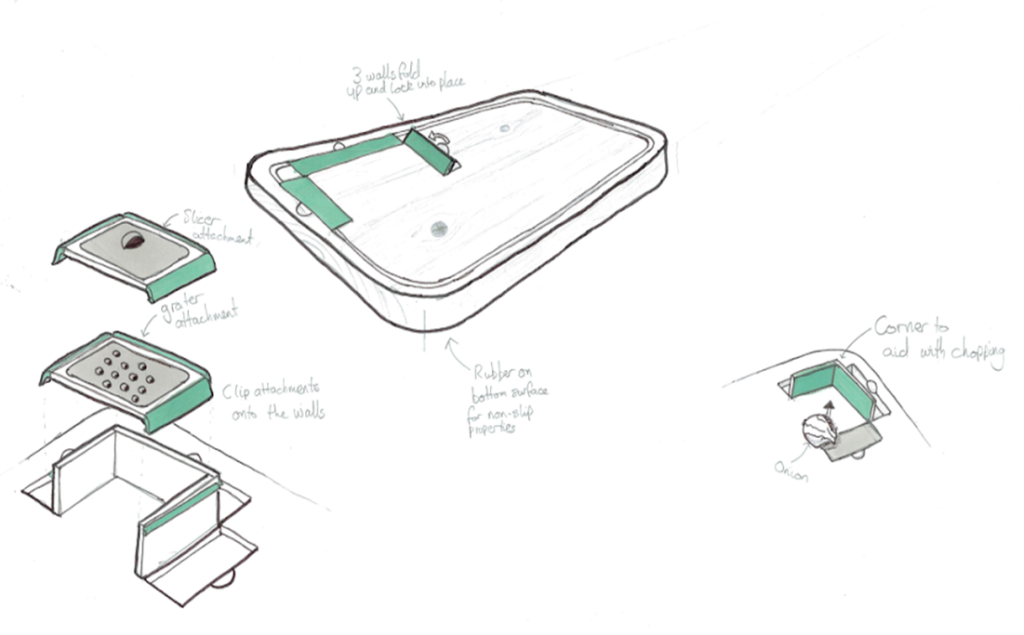

Software Subsystem
The software system, developed in C, was used as the control system. The output speed of the motor was controlled using the input pressure from the user. This was done using an integrator relating pressure as velocity to speed. The software system also controlled the battery life monitor.
Mechanical Subsystem
The system had to be able to be adjustable in height and width. Therefore, multiple calculations needed for this device to function mechanically. These calculations included max forces acting on an inclined slope, polar moments of inertia and spring calculations. These allowed the creation of a chassis and housing components in AutoCAD Inventor.
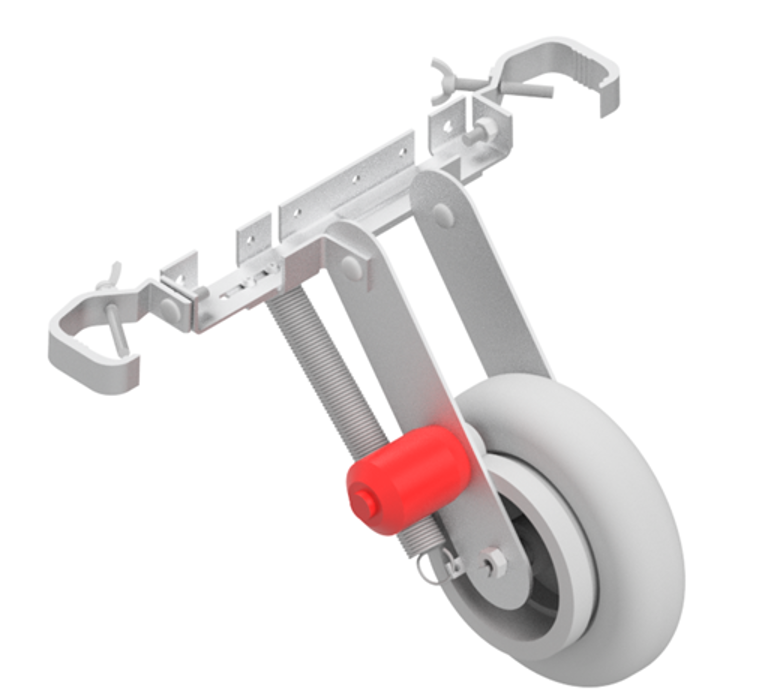
Final Device
The project was a great learning experience. I had to juggle my time between multiple subsystems along with managing my time with hockey. Unfortunately the mechanical system of the device could not be physically created because of COVID19. The project did complete a fully working electronic and software system because of the shorter lead times.
CAD renders were able to be created of the mechanical design to show the final stages of the prototype. I would have loved to carry on this project and integrate more complex systems into the design for example using a hub motor with hall effect sensors for the device speed and torsion springs to reduce the device size.
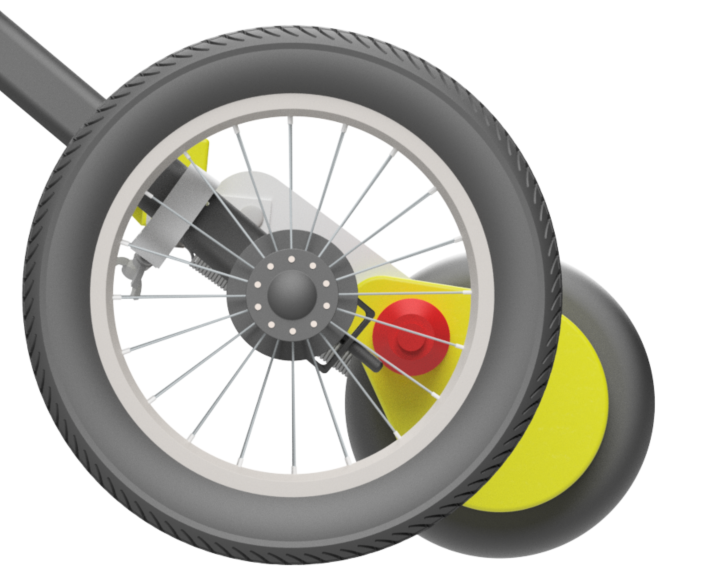
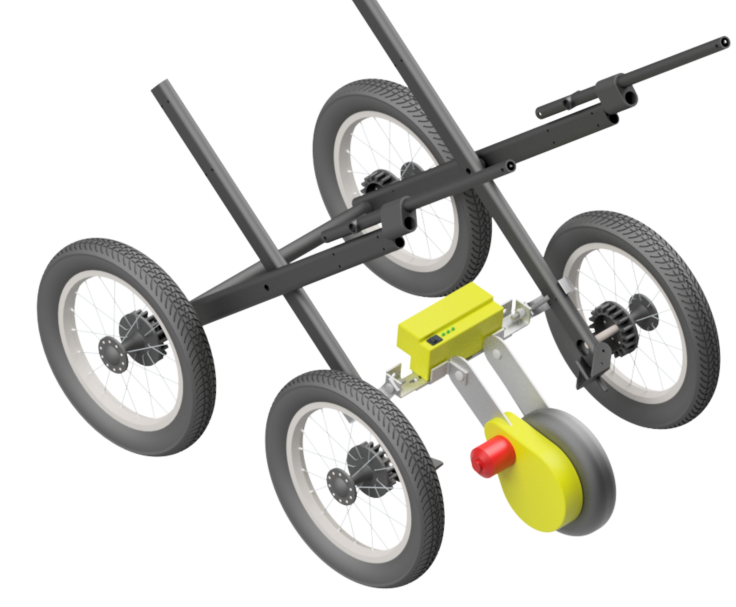
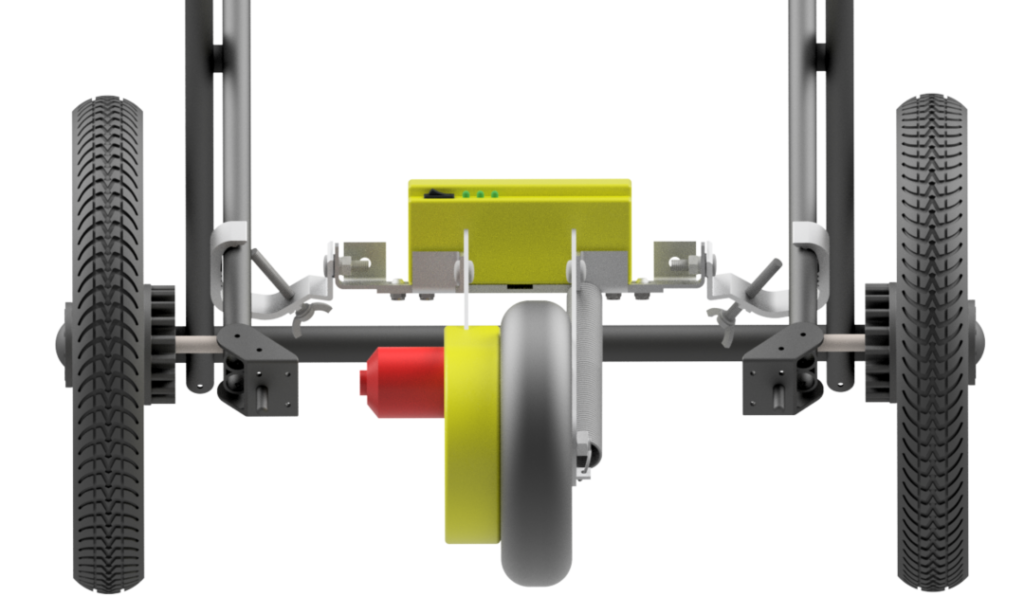
I have attached my final report created detailing everything about my project and a 15 minute video presentation that talks through the processes I used, design iterations and more.